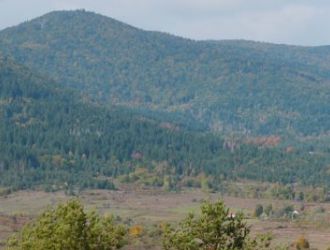Gospić
_880_330_80_s_c1.jpg)
Lika destination area - Gospić
- Budačka 55, 53000, Gospić
- 053 572 025
- 0574 177
- grad.gospic@gospic.hr
- web
The tangible and intangible cultural heritage of the Town of Gospić is the result of centuries-old activities of the population in this area and represents the central element of the cultural and tourist offer.
In recent history, the area of the town of Gospić played a key role in connecting and integrating the Croatian national territory. The cultural-historical core of Gospić as a protected cultural asset, which is marked by typical Vojno Krajina buildings and neo-style multi-story buildings, and traditional architecture visible in the urban matrix of the City, is testimony to its historical importance. The area of the town of Gospić is marked by numerous sacred buildings, as well as forts, cultural monuments and cultural medieval heritage such as the Glagolitic books: the Missal of Prince Novak Disislavić from 1368, the Berlin Missal (1402), the Rock Missal, the Breviary from 1485, the Breviary from the time of Anž Frankapan. (1379 and 1387).
From the rich sacred heritage of the city, the Church of the Annunciation of the Blessed Virgin Mary stands out as an example of a typical 18th century Krajina church, which, due to its design, is a rare example of the sacred architecture of a border settlement in the Lika region. It was built in 1783, and in 2000 it became the cathedral church of the newly founded diocese.
The central cultural institution of the town of Gospić is the Museum of Lika Gospić, which takes care of all movable monumental heritage and immovable cultural monuments in the continental part of the Lika-Senj County. It is located in a building of monumental value built at the end of the 18th century in the late baroque style, and it has the most complete collection of Dinaric traditional culture in Croatia. According to the categorization, it belongs to the group of complex museums because in its activities it combines and takes care of the Archaeological Department with the associated Lapidary, Numismatic Department, Cultural the historical department with the associated Weapons Collection and Furniture Collection, the Ethnographic Department and the Gallery Department. Protected museum materials include the Lapidary Collection, the Furniture Collection and the Weapons Collection. The museum also has an open professional library.
Among other social and cultural-historical landmarks, the statue of a girl named "Marta", the work of sculptor Frangeš Mihanović, in memory of the introduction of water supply in 1894, the building of the High School of Teachers built in 1869, the building of the County of Lika-Senj built in 1894, stand out. Murkovića mill" (old water mill on Novčica), the birthplace of the great Croatian painter Miroslav Kraljević.
Source: https://gospic.hr
More at: https://gospic.hr and https://www.visitgospic.com/



__velika_230_230_80_s_c1.jpg)
__velika_230_230_80_s_c1.jpg)
__velika_230_230_80_s_c1.jpg)
__velika_230_230_80_s_c1.jpg)
__velika_230_230_80_s_c1.jpg)
__velika_230_230_80_s_c1.jpg)
__velika_230_230_80_s_c1.jpg)
__velika_230_230_80_s_c1.jpg)
__velika_230_230_80_s_c1.jpg)
__velika_230_230_80_s_c1.jpg)
__velika_230_230_80_s_c1.jpg)
__velika_230_230_80_s_c1.jpg)
__velika_230_230_80_s_c1.jpg)
__velika_230_230_80_s_c1.jpg)
__velika_230_230_80_s_c1.jpg)
__velika_230_230_80_s_c1.jpg)
_330_250_80_s_c1.jpg)
_330_250_80_s_c1.jpg)
_330_250_80_s_c1.jpg)
_330_250_80_s_c1.jpg)
_330_250_80_s_c1.jpg)
_330_250_80_s_c1.jpg)
_330_250_80_s_c1.jpg)
_330_250_80_s_c1.jpg)
_330_250_80_s_c1.jpg)
_330_250_80_s_c1.jpg)

_330_250_80_s_c1.jpg)
_330_250_80_s_c1.jpg)
_330_250_80_s_c1.jpg)
_330_250_80_s_c1.jpg)